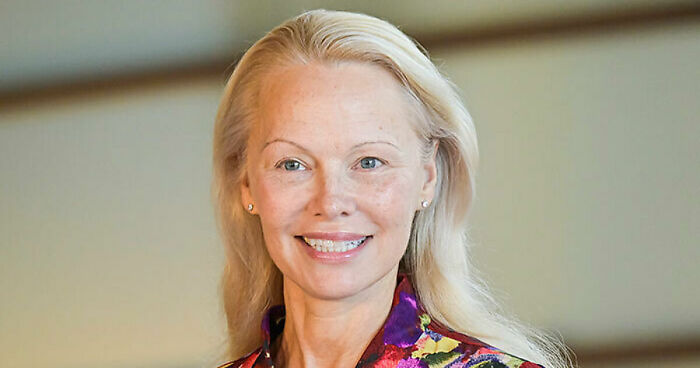Pamela Anderson has openly chosen to go makeup-free at fashion shows, premieres, and on red carpets. At 58, she says this lifestyle reflects freedom, self-acceptance, and a desire to reconnect with her authentic identity. Anderson told Vogue that she no longer feels the need to be “the prettiest girl in the room”; rather, she wants to celebrate imperfect, radiant skin. Her decision resonates especially among older women who face beauty expectations.
What Prompted the Shift
Anderson’s shift began after years of glam and heavy makeup early in her career. Then, in 2019, her long-term makeup artist passed away, and she gradually stopped relying on full makeup routines. By Paris Fashion Week in the fall of 2023, she appeared entirely bare faced, foregoing stylists and makeup for a more natural presentation. This change, she says, “felt like a release.” She also recently played a role in The Last Showgirl, where she requested her character appear raw and almost without stage makeup unless necessary.
Benefits She’s Noticed
Going makeup-free has given Anderson more time and mental clarity. She told interviewers that she saved hours previously spent in makeup chairs. Also, she feels less objectified and more in tune with her real self. She describes feeling “more herself than ever” and believes authenticity became more important than perfection. Although sometimes she uses minimal makeup, such as lip color or blush, most of the time she stays natural.
Inspirations and Wider Movement
Others, like Alicia Keys, have also encouraged women to embrace their natural skin. Beauty experts now emphasize skincare routines, sun protection, and light-reflecting fabrics to boost confidence without makeup. Stylist Natalie Tincher suggests women use bold clothing, texture, and accessories to maintain polish while going makeup-free. Meanwhile, in workplaces, some women still feel pressure to wear makeup, but post-pandemic dynamics and celebrity examples are slowly shifting norms.
Challenges Women Face Without Makeup
Even though many admire the bare look, expectations remain. Anderson and other women report that traditional environments still equate makeup with professionalism. Also, concerns about wrinkles, scars, and facial asymmetry often discourage people from dropping cosmetics. Further, switching to a makeup-free routine demands commitment to skincare and embracing physical changes. Nevertheless, many say the confidence gained outweighs the discomfort.
What This Choice Means for People
Because Anderson’s decision gained public attention, it both challenges long standing beauty norms and offers an alternative path for those tired of appearance pressure. Her stance encourages women to see makeup as optional rather than required. For those seeking more authentic self-expression, her journey provides permission to slow down, focus on skin health, and accept aging. More broadly, the trend spotlights how beauty can shift from external validation to personal comfort.
Conclusion
Pamela Anderson’s move toward makeup-free confidence marks more than a style choice; it embodies self-acceptance, authenticity, and personal evolution. At an age when many face invisibility, she instead claims visibility on her own terms. While beauty trends come and go, her message that real beauty includes imperfections strikes a deeper, lasting chord.



